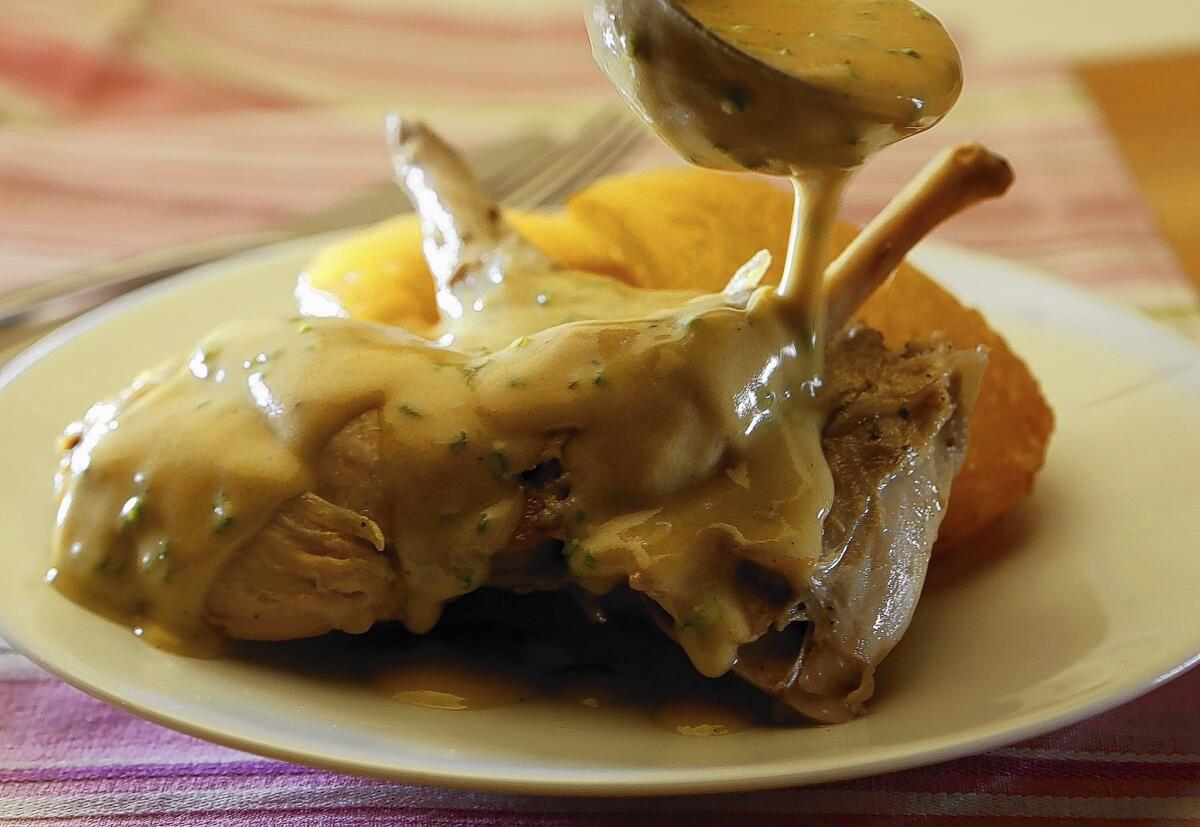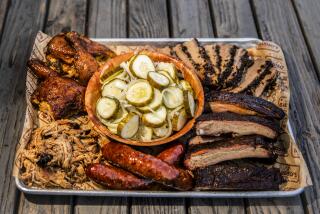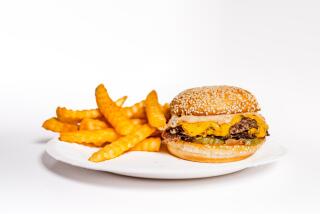Rabbit dishes are regaining popularity

Rabbits âare helping win the war,â proclaimed a Los Angeles Times article from 1943. Touted as a patriotic food during World War II, rabbits were raised by thousands of Americans in their backyards. Along with victory gardens, rabbits helped put food on the table when much of the nationâs supply was shipped to soldiers overseas and ration stamps provided less at home. But even though rabbit consumption spiked during the war, it all but disappeared afterward.
Think rabbit today and your thoughts probably veer to cartoon characters, cereal mascots, Easter and adorable pets. Perhaps the only âbunnyâ youâve ever eaten was of the milk chocolate breed. For years, it seems the only place you could find âthe real dealâ was occasionally on the menu at French or Italian restaurants.
But rabbit appears to be going through a renaissance of sorts.
âI think itâs gaining in popularity,â says Mark Pasternak, co-owner, along with wife Myriam, of Devilâs Gulch Ranch in Marin County. Their farm supplies rabbit to a number of butcher shops and restaurants in and around Northern California, including the French Laundry and Chez Panisse.
And in an era when game meats and nose-to-tail eating are redefining fine dining as food sport, rabbit is both familiar and exotic enough to appeal.
âIt almost has a prohibitiony quality to it, like it was something your grandfather ate. Itâs a great âold-fashionedâ meat,â says chef Ken Addington, who, with restaurant partner Jud Mongell, owns LA Chapter in downtownâs Ace Hotel as well as Five Leaves and Nights and Weekends in Brooklyn, N.Y. âWeâve always had rabbit on the menus in Brooklyn. Itâs a fun, versatile meat.â
And though Mongell was hesitant to feature rabbit at first, heâs come around to the idea. âIn these times when weâre trying to be so conscious of what, and how, weâre consuming, itâs something to consider.â
At a time when buzzwords like âorganic,â âlocalâ and âsustainableâ are driving the market, rabbit is ripe for resurgence. According to Slow Food USA, rabbit can produce 6 pounds of meat using the same amount of food and water it takes for a cow to produce only 1 pound. Not to mention the health benefits. Rabbit is a lean meat that is higher in protein but lower in calories, fat and cholesterol than many other meats, including chicken, beef and pork.
But how does it taste?
Domestic rabbitâs all-white meat is fine-grained and has a mild flavor compared with other game meats.
âRabbit is one of my favorite subjects because it is so versatile, like veal or chicken,â says chef Evan Funke of Bucato. A favorite dish of his for those new to rabbit is rag¿¿. âAnytime I get the opportunity to introduce people to rabbit, [I do]. Rag¿¿ is easy.â
Addington likes to pair bright flavorings, such as citrus, with rabbit; he currently has a lemon grass rabbit rag¿¿ on the menu at LA Chapter.
Though rabbit is mostly available through butcher shops such as Belcampo Meat Co. and Puritan Poultry and online, it is turning up more frequently in upscale markets, including select Gelsonâs markets. It is usually sold whole, though you can have your butcher break the animal down into parts. (But if youâve ever wanted to learn how to break down any four-legged animal, rabbit is a great place to start because itâs so small. Do be careful with the bones, however; rabbit bones are even more delicate than those of a chicken.)
And despite its reputation as an inexpensive option during frugal times, store-bought rabbit is not cheap; prices in Los Angeles range from about $10 to $13 a pound for a 2- to 3-pound rabbit.
More to Read
Eat your way across L.A.
Get our weekly Tasting Notes newsletter for reviews, news and more.
You may occasionally receive promotional content from the Los Angeles Times.









